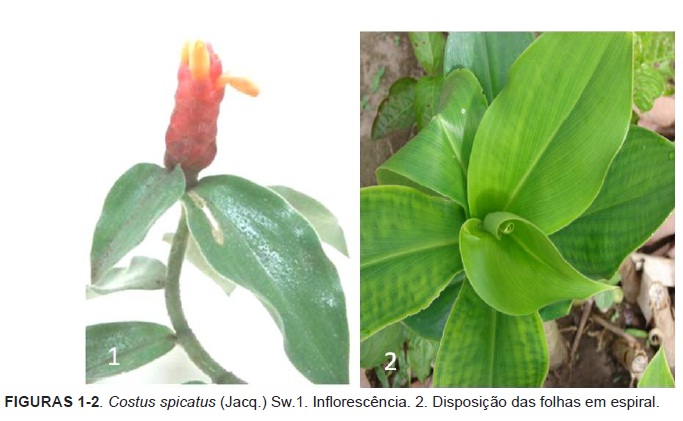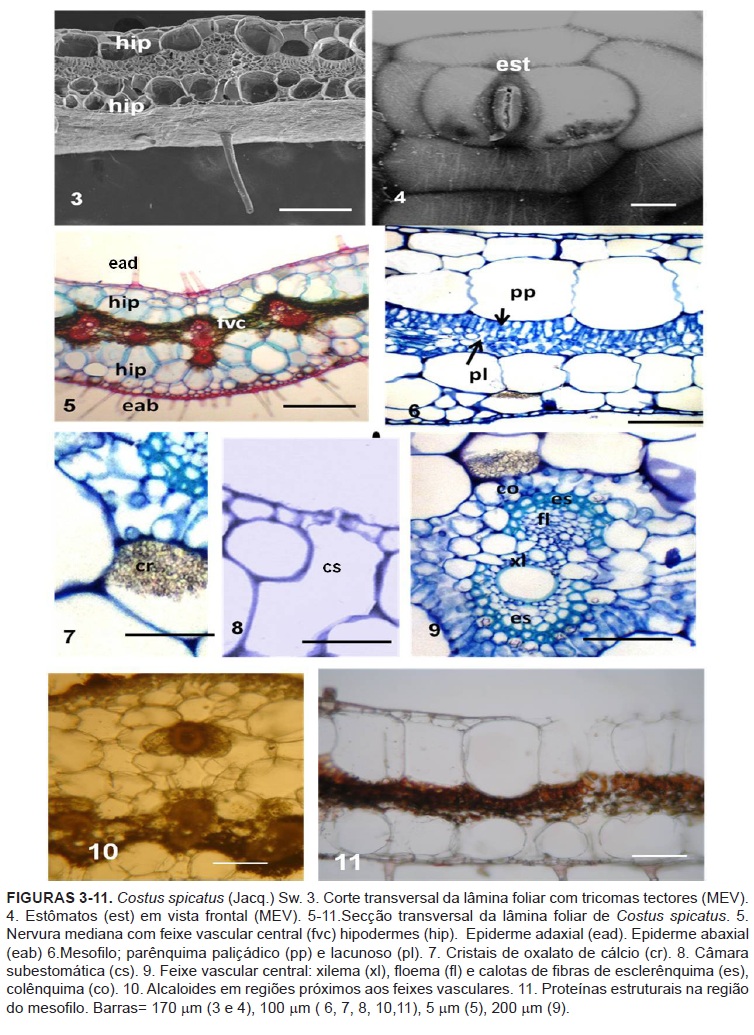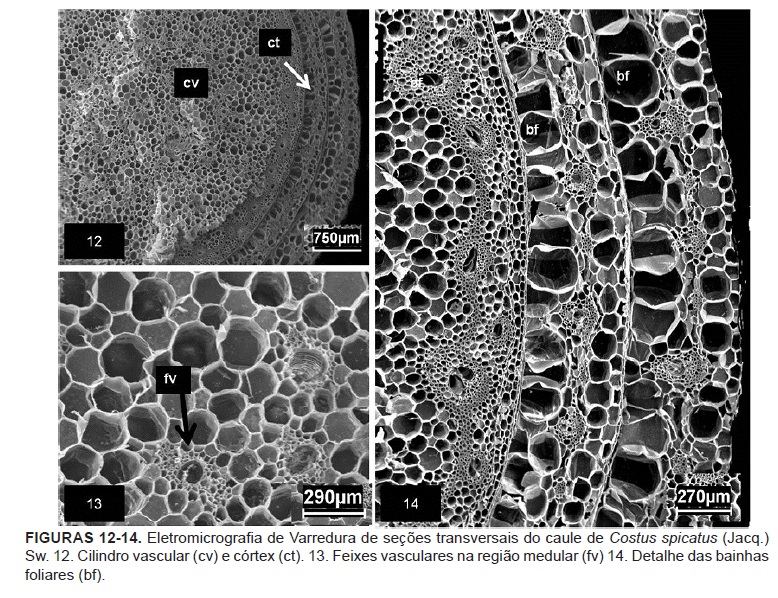The leaves of Costus spicatus are widely employed in folk medicine for the treatment of several diseases, including: malaria, hepatitis and urinary tract disease. The purpose of this paper was to identify aspects of the anatomy of vegetative organs (leaves, stems, roots and rhizomes) associated with phytochemical screening to contribute with relevant information for the development of taxonomic and pharmacological studies. The anatomic analysis through optical microscopy and scanning showed amphistomatic leaves with tetracitic type stomats and simple filamentous tector trichomes. Mesophyll is constituted by a chlorophyllian parenchyma, which is divided into two regions intersected by a strand of fibers and vascular bundles. The stem is atactostelic, such as for the rhizome. The root is polyarc. The histochemical tests indicated the presence of structural proteins, alkaloids, and calcium oxalate crystals. Chemical prospecting with hydroalcoholic and aqueous extracts attested the presence of saponins, tannins, alkaloids, phenolic compounds and heterosides as cyanogenic glucosides.
anatomy; secondary metabolites; medicinal plants; Costus spicatus







